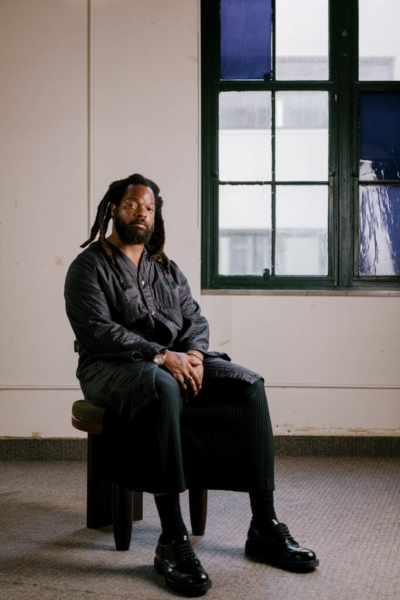Contents
Design offers a window into culture, and a means to connect. But it also holds the power to elicit the opposite effect, isolating if used without intention. The term “master bedroom,” for example—phased out of design and real estate vernacular only in recent years—establishes a clear hierarchy within a home using a word associated with slavery. In honor of Juneteenth, a federal holiday which commemorates the order given on June 19, 1865 to emancipate those were enslaved in the U.S., we’re revisiting the many ways design champions positive change and reflects Black experiences around the globe.
How 5 Designers Look to the Past to Create Expressive, Modern Works
Michael Bennett
Michael Bennett. Photography by Mark Kushimi.
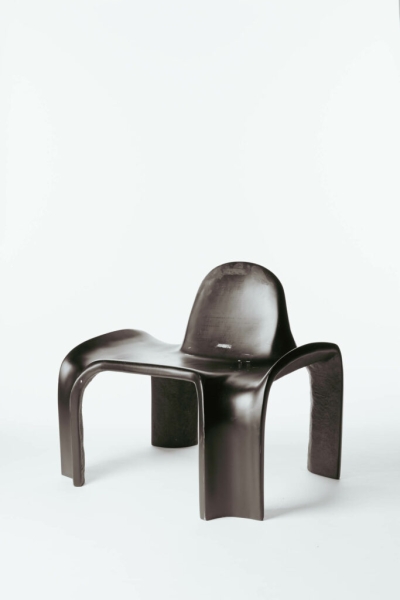
The Gumbo Chair. Photography by Mark Kushimi.
Michael Bennett, a former Super Bowl champion turned designer, uses his knowledge of physicality and human forms to shape his studio’s aesthetic, while drawing on rituals of the Black American life and the African diaspora experience. He’s also working to create a more diverse and inclusive industry by establishing endowments that support students of color in design education. “If you look at Japanese or Scandinavian design, their furniture pieces are not made for a Black body. When I am designing, I think about the Black body in scale, proportions, and geometries,” says Bennett. “Materiality is important because in the end, we are taking up space. I look at forms that are primordial or tribal. I don’t want to overcomplicate design for the sake of overcomplicating. In the end, my goal is to make timeless silhouettes that speak forever and become a part of history. My goal is to allow the viewer to experience the design in its purest form. The subtle moments of shaving the wood over and over and redoing it and then refinishing it has something to do with the essence of being a part of the African diaspora. When I make the Gumbo stool, I’m thinking about my mother braiding my sister’s hair.” Read more about Bennett’s unique career path.
Tosin Oshinowo
Tosin Oshinowo, a distinguished architect from Nigeria, uses her knowledge of the built environment for good. From collaborating with the United Nations Development Program to construct spaces for people displaced as a result of the Boko Haram insurgency to founding her own lifestyle brand called Ile-ila, the creative relies on her design ethos, rooted in what she calls Afro Minimalism, to challenge conventionality and create community.
“I came up with the term Afro Minimalism because I believe it’s important to associate your aesthetic with your identity. In my case, I’m very conscious that I localize my design. It’s not that you’re going to see something Afro in it but the point is, it has been localized to our context, our use of space. It’s our traditional way of trying to live. One has to take into context one’s culture when designing spaces,” she says.
Nods to Oshinowo’s Yoruba roots are reflected in her use of materiality. “So much of our history is encapsulated in the Aso oke fabrics. When I started to buy this vintage Aso oke, my mom would say things like ‘I remember when my mom used to wear this,’” she shares. “Then there’s a thread that was a reigning pattern for the ’80s, for the ’90s, so you can actually chronicle our history in these threads and these fabrics. There’s something very beautiful about it. It’s so poetic. That was where the journey of Ile-ila started. Looking at Aso oke, not just as a dress ready for special occasions but to look at another way to create and preserve this history in an object that can stay in the open.” Read more about Oshinowo’s work.

Tosin Oshinowo at work. Photography by Spark Creative.

The Adunni chair by Oshinowo. Photography by Emmanuel Oyeleke.
Avery R. Young
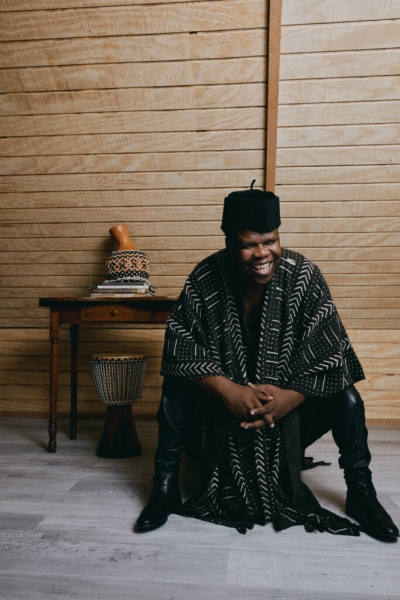
Avery R. Young, Chicago’s inaugural poet laureate and principal member of CAB 5. Photography by Sulyiman Stokes.
Artist and Chicago poet laureate Avery R. Young is not a designer, exactly. Rather, he’s a wordsmith with an eye for curating spaces. For the recent Chicago Architectural Biennial (CAB 5), Young, who is part of the artist collection that curated the event, played an integral role in choosing its title: “This is a Rehearsal,” which speaks to current trials and errors in addressing pressing global concerns like food production, land reclamation, and revised histories.
“To quote a brilliant poet by the the name of Rudy Rae Moore in his role as the Disco Godfather, ‘Put your weight on it!’ That is my philosophy of fixing, and/or maybe erasing the boundaries of this thing I do with poetry,” Young shares. “Language can’t ever be merely a matter of ink and page. The page of a book is a representative of the sky in real time, and real life. The ink, or the poem is limb and love tumbling somersaults underneath it. I am using poetry, performance and visual text as a means to turn up the volume on that time in this life, when this happened and/or could, if we dream this way. I can’t do that on my tip toes or making myself feather. I gotta take this body and voice and spin it a solid foundation. Put my weight on it. I can growl or scrawl the hell outta preposition phrase. I promise.” Read more about Young’s work.
Thabisa Mjo
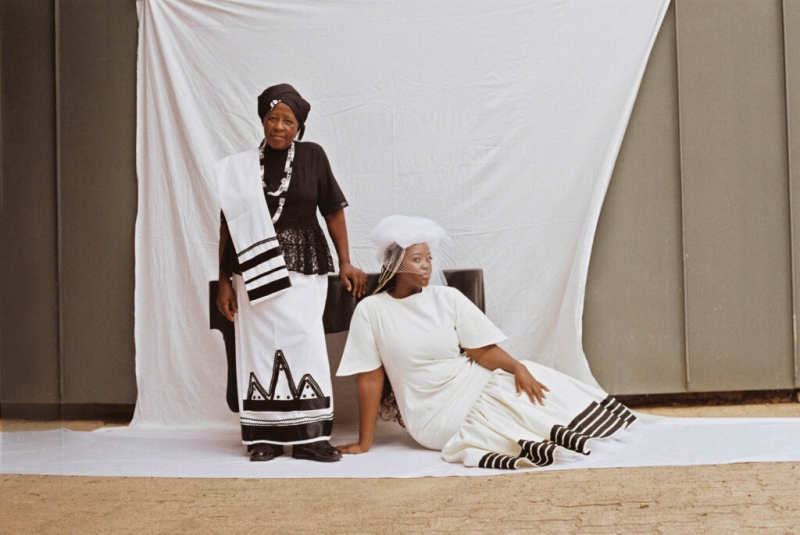
Thabisa Mjo and her mother. Photography courtesy of Thabisa Mjo.
For Thabisa Mjo, a designer based in South African, sharing cultural narratives via her lighting collections, ceramic plates, and furniture is second nature. She draws on recognizable shapes and materials, enabling people to feel seen by tapping into whimsy, nostalgia, and, importantly, joy. For The Art of Measuring table, Mjo turned to a traditional dress called uMbaco, worn by Xhosa people in South Africa. “What I love about the dress is that it’s something that has been around for centuries and it is sort of passed down from generation to generation and so every generation puts their own spin on it,” Mjo says. “When my mother wore it, she infused her own value to it, now I’m wearing it, I’m imbedding my value which is preserving and celebrating my culture but I also exist in a global world. I’m influenced by people and cultures all over the world so I always approach these things with a contemporary design-minded aesthetic.”
“I wanted to interpret the motion and movement of the dress on the table. When you see the table, you will notice that the sides kind of flow in and out which shows the movement of tradition. Culture isn’t stagnant because it will die and we don’t want our culture and heritage to die but we want to adapt it to fit in our lives. Because it’s a textile, I wanted it to look like it makes up the table, just by saying who we are, our heritage, our culture, our lived experiences are the table,” she continues. Read more about Mjo’s designs.
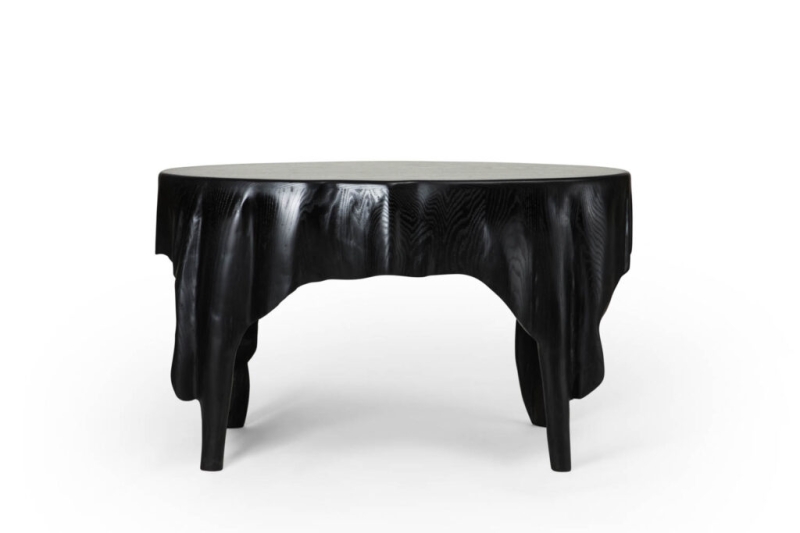
The Art of Measuring table. Photography courtesy of Thabisa Mjo.
Abreham Brioschi
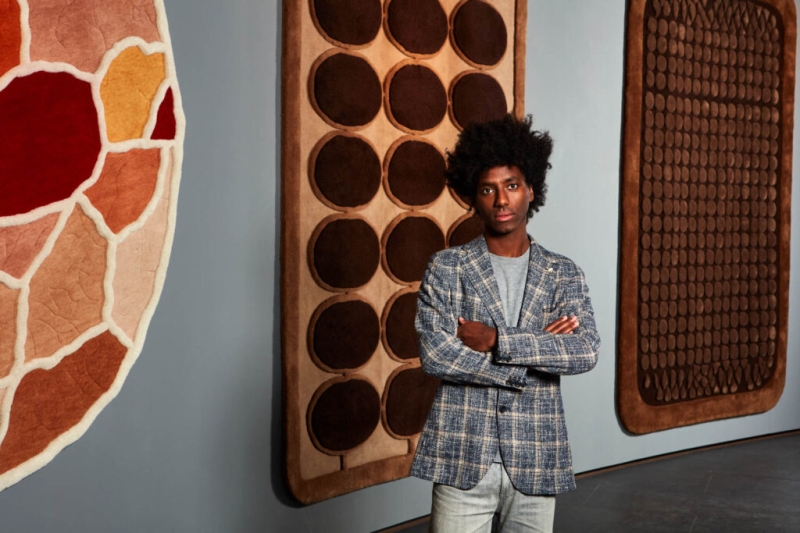
Abreham Brioschi with the Mursi rug. Photography courtesy of Abreham Brioschi.
Abreham Brioschi, an Italian designer of Ethiopian descent, asserts that his work is in direct conversation with his heritage, and often creates forms that nod to Ethiopian symbols. Take his Burgui collection, which combines different sculptural elements, like the hieroglyphical-shaped Wollaita chair inspired by columns at the Bet Maryam church in Lalibela, Ethiopia. “In African design, the sense of community and the concept of humanity are very present and strong. So much so that the design inspiration referencing African culture is deeply tied to relationships and functionality, but bound to necessity,” he shares. “It is a design based on unity and not distinguishing elements; contemporary African design is a necessary hybridization between what has just been described and more contemporary futuristic figures. Where African design and contemporary language differ, starting from the base, is the purpose.” Read more about Brioschi’s design ethos.
